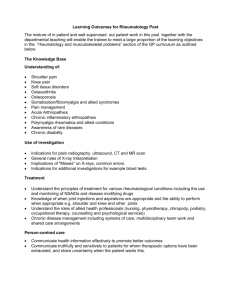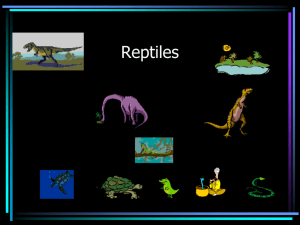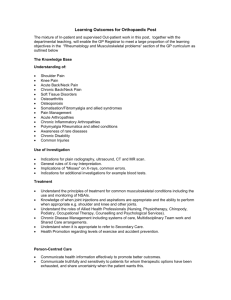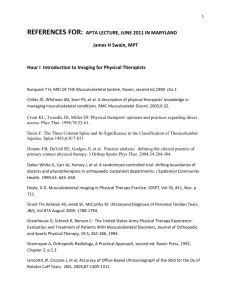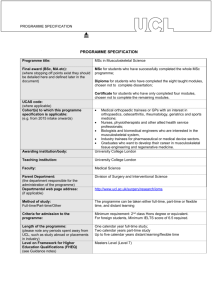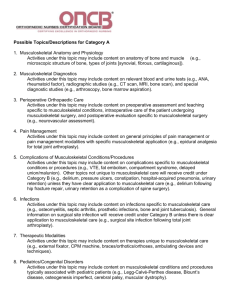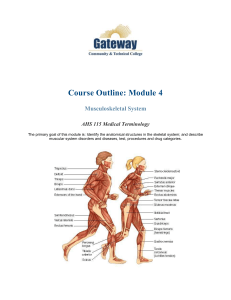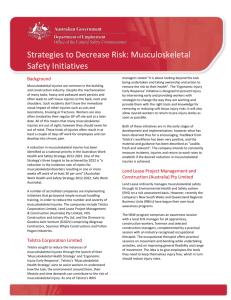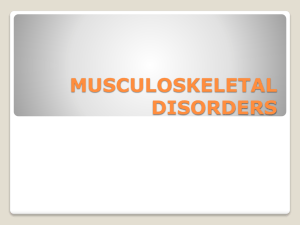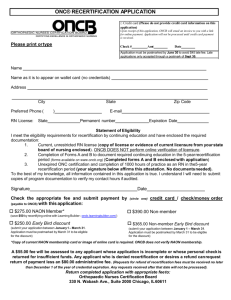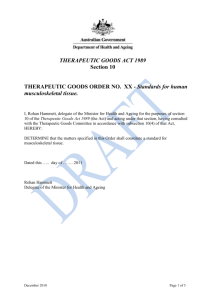An Approach to Curriculum Development
advertisement
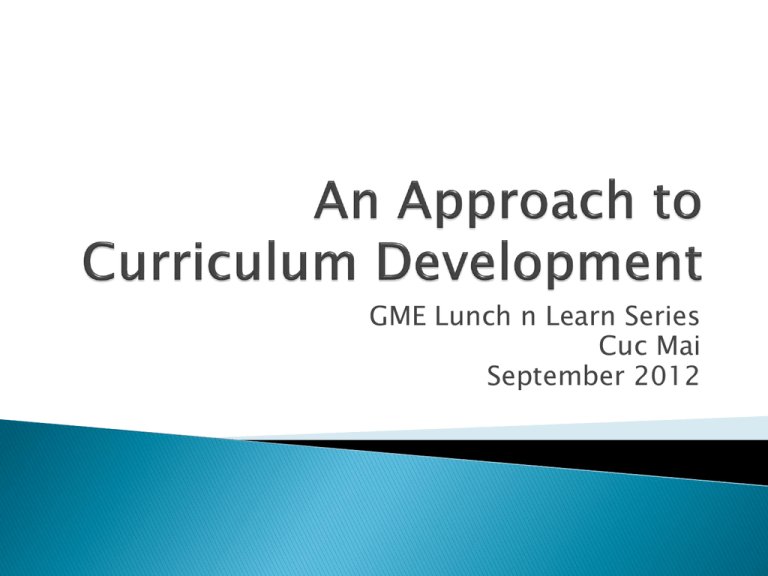
GME Lunch n Learn Series Cuc Mai September 2012 • Common Program Requirements: • Competency-based goals and objectives for each assignment at each educational level • Internal Medicine Specific Program Requirements: • For each rotation or major learning experience, the competency based goals and objectives (the written curriculum) must contain the educational plan, goals and objectives, educational methods, and the evaluation tools that the program will use to assess the resident’s competence. Recognize key components of curriculum development Demonstrate how each of these components can be used to benefit learners and promote scholarly activity Identify resources to improve curriculum development skills Develop a curriculum to teach residents about how to diagnose and treat musculoskeletal diseases and increase number of joint injections performed during residency. Builds a rationale for the curriculum Focuses the curriculums’ goals and objectives Focuses the educational and evaluation strategies Makes you an expert and scholar Musculoskeletal disorders are common and a major cause of disability Patients want quick access Training increases confidence and decreases referrals National organizations recommend training in musculoskeletal exam; diagnosis; management Preferred training is in clinical practice with trained preceptors Houston TK et al. A primary care musculoskeletal clinic for residents: success and sustainability. J Gen Intern Med 2004; 19: 524-529. Assess the differences between your specific learners and the general audience Assesses the environment to help tailor the intervention Prevents duplication Identifies stakeholders and builds relationships with stakeholders Methods for collecting information: ◦ Reviewed existing training ◦ Senior resident exit survey, Survey of current residents, & Focus group of residents Findings: ◦ Strong desire for training ◦ Low levels of training and clinical experience and self rated proficiency ◦ Wrong case mix in Rheumatology and Orthopedics ◦ Preferred direct supervision of patient care by practitioners with expertise in musculoskeletal medicine Houston TK et al. A primary care musculoskeletal clinic for residents: success and sustainability. J Gen Intern Med 2004; 19: 524-529. Goal: broad educational goal Objective: specific measurable objective Helps prioritize Direct content Identify learning methods Enable and direct evaluation Provides clear communication to learners, faculty, and stakeholders Required Types of Objectives ◦ Learner Objectives Cognitive, Affective, Psychomotor ◦ Process Objectives Curriculum Implementation Measures ◦ Patient/Healthcare Outcome Objectives Patient Outcomes: pt satisfaction Healthcare/System Outcomes: board pass rate Who will do how much of what by when? ◦ ◦ ◦ ◦ ◦ Who (1) Will do (2) How much (3) Of What (4) By When (5) Maintain congruence between objectives and methods Use multiple educational methods Choose methods that are feasible Table 5.2 Matching Educational Methods to Objectives* Type of Objective Affective: Attitudinal Cognitive: Knowledge Cognitive: Problem-Solving +++ +++ +++ ++ + + ++ ++ + ++ +++ +++ ++ Small-group learning Problem-based learning Team-based learning Learning projects Role models Demonstration Role plays Artificial models and simulation ++ ++ +++ +++ ++ +++ +++ +++ + + + ++ ++ + ++ + ++ + ++ ++ Standardized patients Real life experiences Audio or video review of learner + + + ++ ++ Educational Method Lectures Programmed learning Discussion Reflection on experience Feedback on performance Behavioral / environmental interventions** + + + + + Psychomotor: Skills or Competence Psychomotor: Behavioral or Performance + + + + +++ +++ + +++ +++ + + + + ++ +++ +++ + + + + ++ ++ + + ++ ++ +++ +++ +++ + +++ + + + +++ Musculoskeletal Curriculum: ◦ Development of workshops and syllabus materials on diagnosis and management for common musculoskeletal disorders, including injection therapy. ◦ Institution of a new primary care musculoskeletal clinic supervised by Internal Medicine preceptors with a special interest in musculoskeletal diseases. Houston TK et al. A primary care musculoskeletal clinic for residents: success and sustainability. J Gen Intern Med 2004; 19: 524-529. Identify Resources ◦ Personnel, Time, Facilities, Funding Obtain Support ◦ Internal vs. External Develop Administrative Mechanisms Anticipate and Address Barriers ◦ Competing Demands, Attitudes Develop a Plan for Introducing Curriculum ◦ Pilot, Phase In, Full Implementation Musculoskeletal clinic ◦ Financial analysis and feasibility analysis had to be done ◦ Administrative support was obtained. ◦ Plan discussed with Rheumatology and Orthopedics Houston TK et al. A primary care musculoskeletal clinic for residents: success and sustainability. J Gen Intern Med 2004; 19: 524-529. Need to determine if goals are met Provides information for improvement Documents accomplishments Specifics to Consider ◦ Evaluation Questions Address learner objectives ◦ Evaluation Design Consider internal and external validity Posttest, Pretest/Postest/Control Group Recognize and apply these 6 steps to curriculum development ◦ Problem Identification & General Needs Assessment, Targeted Needs Assessment, Goals & Objectives, Educational Strategies, Implementation, Evaluation & Feedback Define objectives in specific and measurable language ◦ Who will do how much of what by when? Use references to help your faculty develop curriculum for your learners Kern D, Thomas P, Hughes M, Barker L, Bass E, Carrese J, Wolfe L. The Six-Step Approach to Curriculum Development. SGIM Workshop. 5/2009. Kern D. Curriculum Development for Medical Education. Second Edition. Thomas P, Kern D. Internet Resources for Curriculum Development in Medical Education. An Annotated Bibliography. J Gen Intern Med. 2004; 19: 599-605.
